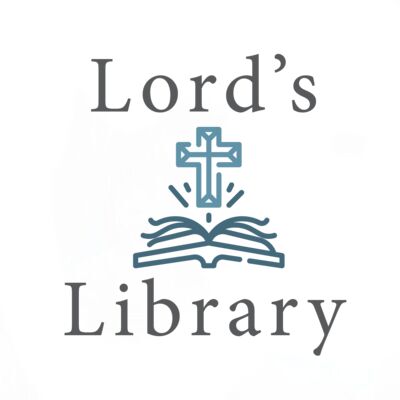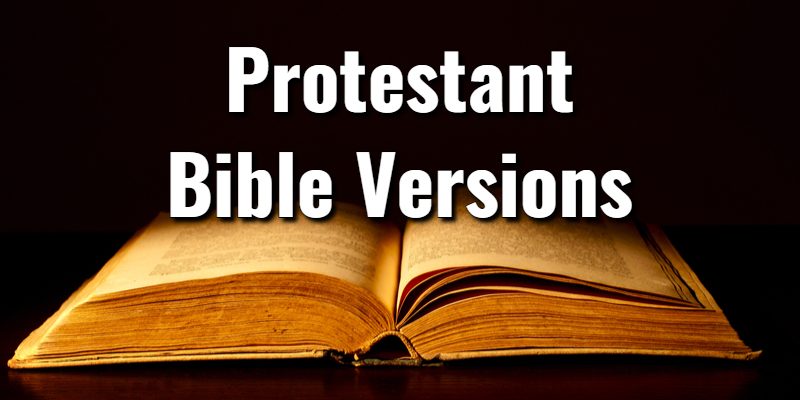Lord’s Library editors compiled this resource to help Christians understand the different Protestant Bible versions.
Today, Protestantism (in its many forms) makes up the second largest number of Christians behind Catholicism. Protestantism is the most diverse of the three main branches of Christianity, and there are roughly 200 major Protestant Christian denominations in the world, with thousands of smaller ones in tow. While there are small differences between the Protestant denominations, they were all born out of the Protestant Reformation and the desire to see change come to a church that to some was deviating too far from Biblical doctrine.
The split that happened during the Protestant Reformation ended up affecting more than church theology, hierarchy, and practice. The Reformation also brought with it a more critical look at the different Bible translations used and accepted by the church, as well as what accepted Biblical canon should contain. As a result, many of those changes are still present in the Bibles of today.
Protestant churches of today use Bibles with notable differences from their Catholic and Orthodox counterparts. We are going to dive into these differences and the history behind them so we can clearly see what makes a modern Protestant Bible what it is and the history that led us here.
Protestant Bible Versions Comparison List
Bible Versions Used by the Protestant Church

Before we dive into the Bible Versions most used by the Protestant Church, we must first clearly define what “Protestant Church.” Is. There is not a singular organization that calls itself “The Protestant Church” as we know other denominations, such as “The United Methodist Church.” Rather, what we call the Protestant Church is a collection of denominations stemming from the reformation period, being Western churches that separated themselves from the Catholic Church.
Most modern English Bible translations can be considered “Protestant” Bibles as they were translated, edited, and published by Protestant groups. www.ChristianPost.com reports data (with the survey being carried out by Ellison Research) showing that the New International Version is the most popular Protestant translation among pastors. The survey was conducted with data from a wide variety of Protestant denominations. The runners-up to the NIV were the King James Version at number two, the New Revised Standard in number three, the New King James Version in number four, and the New American Standard in number five. This data also reflects the most popular Bible translations among Protestant church-goers as well, with the English Standard Version being very close in popularity to the above-mentioned translations.
How is the Protestant Bible Different than the Catholic and Orthodox Bibles?
The most striking difference between Bibles of the Protestant tradition vs the Catholic and Orthodox traditions is the number of books present in the Bible. The Protestant Bible has 66 books between its Old and New Testament, while Catholic and Orthodox Bibles contain anywhere from 73-80 books depending on the specific tradition those particular Catholic or Orthodox traditions follow. These extra books come from what is known as the Apocrypha or Deuterocanonical books. These books are accepted by most Catholics and Orthodox Christians but rejected by Protestants under the claims of unknown authorship and doubtful authenticity.
Martin Luther’s Bible of 1534 was the first to publish the Apocrypha as a separate section between the Old and New Testaments. The practice of including only the Old and New Testament books within printed bibles was standardized among many English-speaking Protestants following an 1825 decision by the British and Foreign Bible Society. Prior to this, you’d almost always find the Apocrypha in any Bible, even if it was separated from the Old and New Testaments. Today’s Protestant Christians have varying opinions and interests regarding the Apocrypha, but most agree with the view that the books within are non-canonical.
What Makes a Protestant Bible “Protestant?”
Since there is no larger organization known as “The Protestant Church,” there are no hierarchical regulations that determine which Bibles Protestants may use either in the U.S. or abroad. Each denomination’s ruling body holds its own authority to determine such things, even though most don’t have strict regulations on this matter and allow their churches to use a variety of modern Bible translations.
Protestants widely accept most modern Bible translations. One prominent exception is a Christian sub-group that appears within a variety of different denominations that advocates for the exclusive use of the King James Version. These Protestants will denounce modern English Bible translations, pointing to errors, inconsistencies, and liberal theology popping up in more recent translations. This group is small but can be very vocal to this day. You’ll often see them referred to as, “KJV Onlyists.”
Protestant Churches most often use translations such as the NIV, ESV, etc. because they are widely regarded as accurate and faithful translations that are also easily accessible to most readers. Many Protestant churches have a strong focus on reaching “seekers.” These easier-to-read and understand Bible translations help to convey the message of the Gospel more clearly and efficiently to new Christians or those seeking a relationship with God.
Popular Protestant Bibles Among Church-Goers
When studying the most popular Bible translations for Protestant believers in their personal study, it’s helpful to look at Bible sales. The Evangelical Christian Publishers Association reported the following Bibles as the top ten best-selling as of June 2021:
- New International Version (NIV)
- King James Version (KJV)
- New Living Translation (NLT)
- English Standard Version (ESV)
- New King James Version (NKJV)
- Christians Standard Bible (CSB)
- Reina Valera (RV, Spanish)
- New International Reader’s Version (NIrV)
- The Message
- Nueva Version International (NVI, Spanish)
There are a couple of interesting things to note from this list. Two Spanish Bibles are now in the top ten, while neither was listed ten years ago when the last list was published. Also, the New American Standard Bible is no longer on the list, though it appeared the last two times the list was published. So, this tells us that we are seeing more Spanish-speaking Protestant Christians as well as more interest in mostly easier-to-read translations, minus the continued popularity of the King James Version.
Final Thoughts
Ultimately, the nuances between “Protestant,” “Catholic,” and “Orthodox” Bibles are insignificant to your average believer. For example, the content found in the Apocryphal books will not make or break the faith of your average Christian or instill in them false doctrines. The smaller theological nuances contained within will also not likely shape a typical Christian’s personal theology in any way. The differences mainly come down to tradition, history, and practice between different expressions of the Christian faith. Though the differences are not ground-breaking for most of us, it’s important to educate ourselves and understand the differences between these Bibles so that we can have a broader understanding of Christian Bible use.
Lord's Library participates in affiliate programs. We may make a small commission from products purchased through this resource.
- What Does the Bible Say About Achievements? With Key Scriptures - April 11, 2025
- What does the Bible Say About Abortion? With Key Scriptures - April 11, 2025
- Prosperity Gospel Meaning in the Scriptures: Is it Biblical? - April 7, 2025












